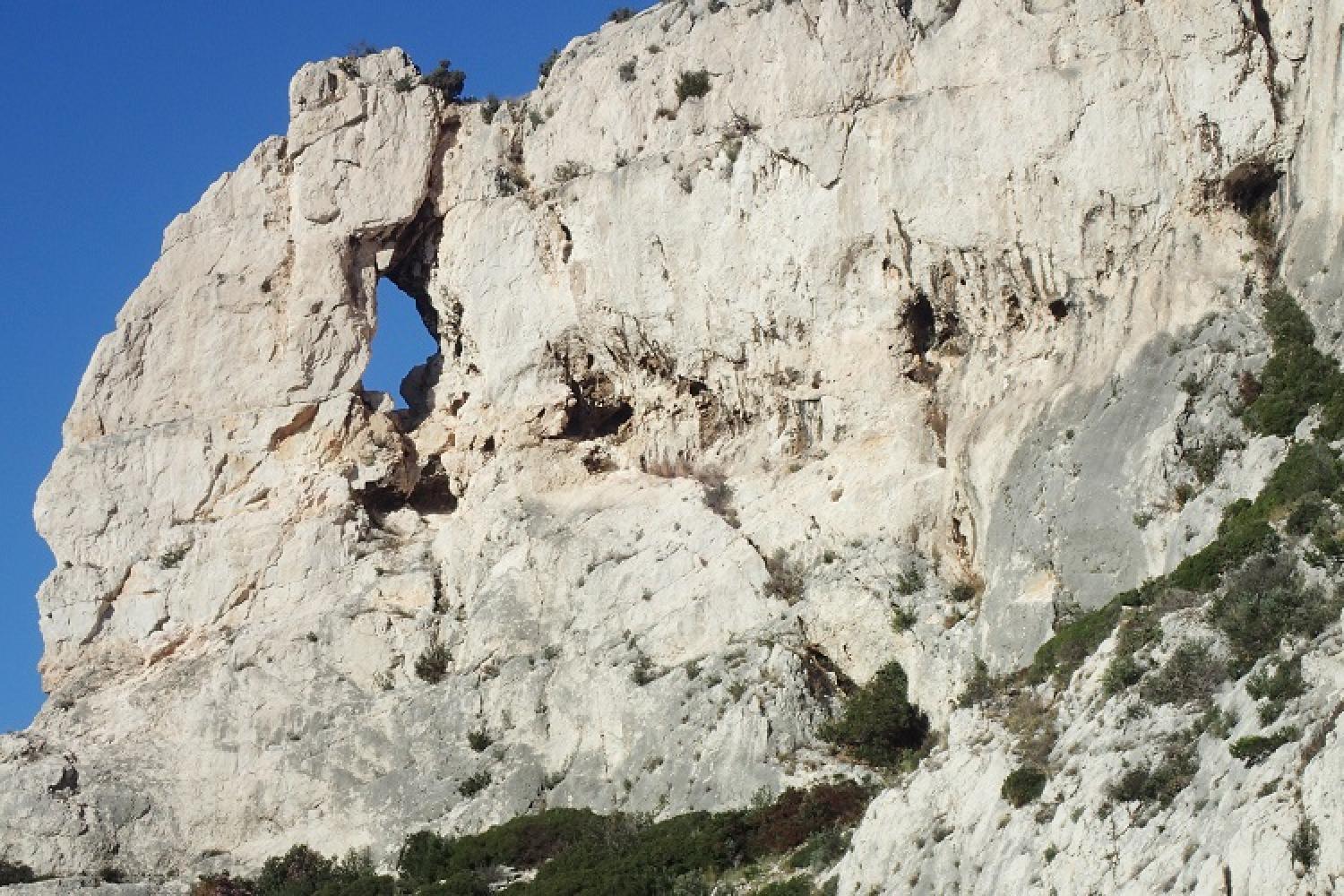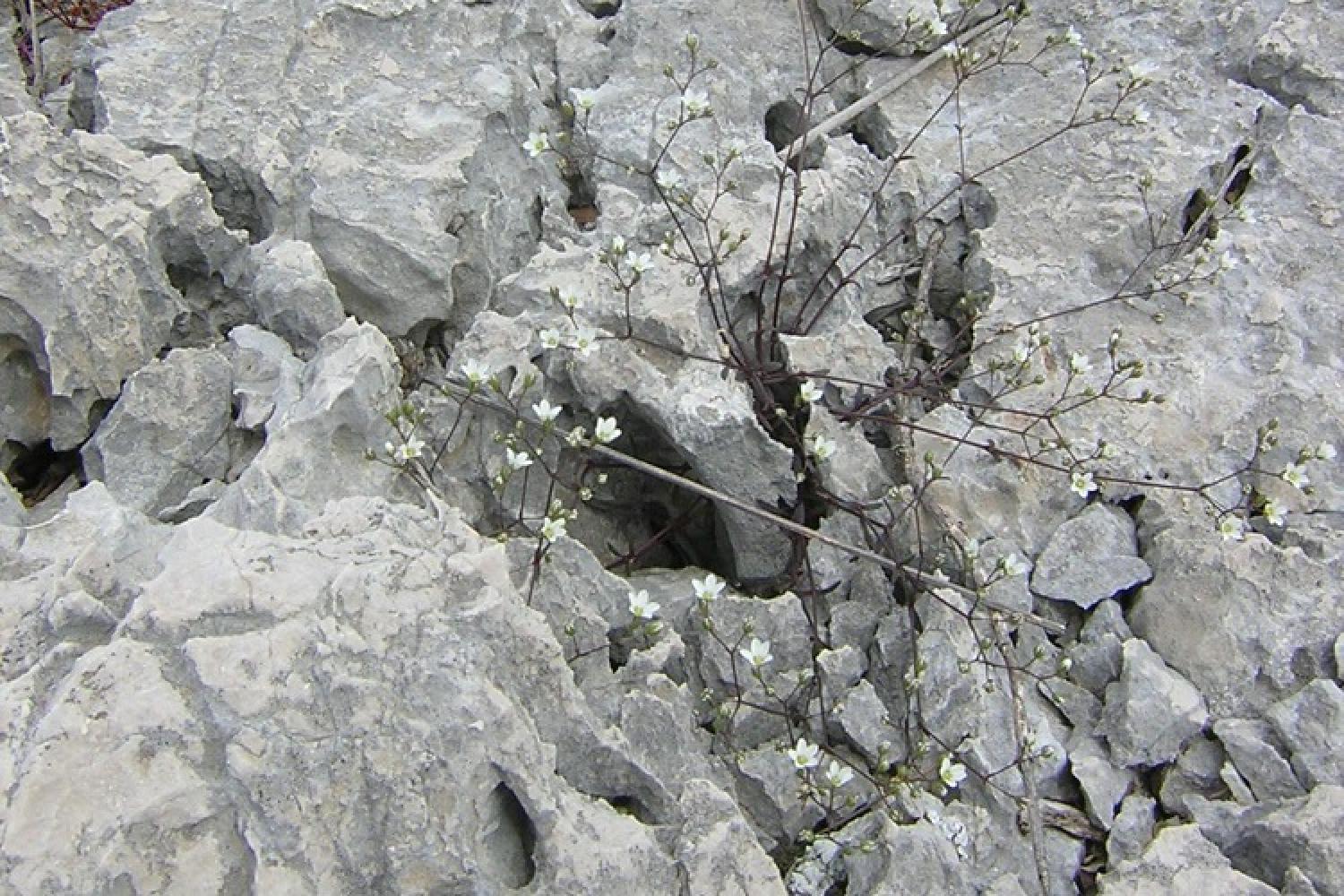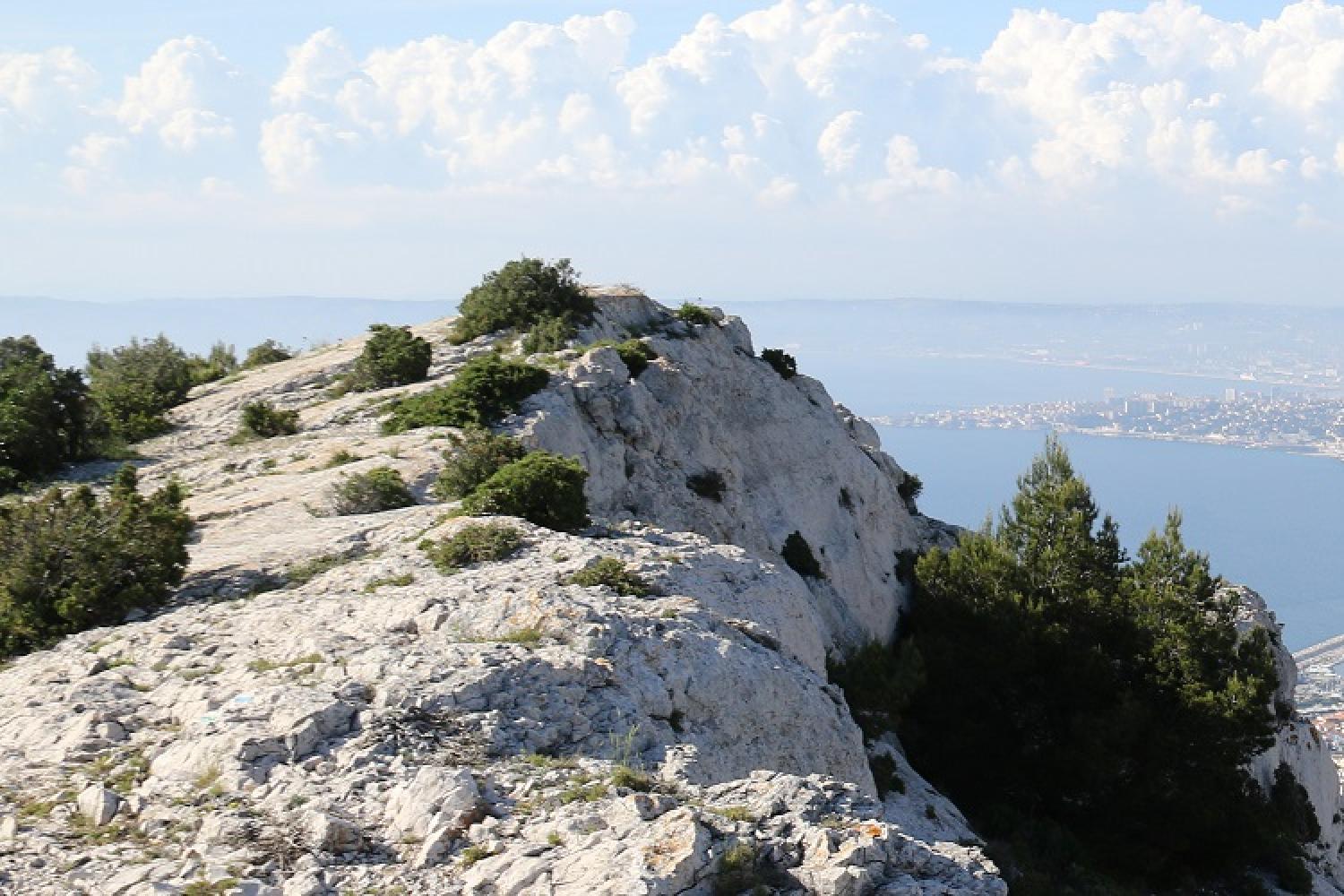Description
The limestone cliffs of the Calanques host a wealth of, often unexpected, biodiversity that reveals itself to those who are ready to take the time to observe it. Plant species grow in cracks and holes in broad daylight or hidden away from prying eyes.
- In the cliffs plants grow in crevices where small amounts of organic matter accumulate and sometimes in rocks hidden from light and wind, such as certain ferns.
- On some of the summits and plateaux limestone pavements can be found.These are natural limestone habitats with incisions, some deep, into which plants introduce their roots.
- On the cliff tops plants resisting to the harshest climatic conditions grow. These are often very compact and are thus able to resist wind.
- At the foot of the cliffs, scree can be found , formed from ancient rock fragments. Dating to the last ice age the scree is no longer supplied with fresh rock and this natural habitat is therefore fragile. In these areas where scree accumulates, species able to adapt to this unstable ground can be found.
Main associated species
- Laser de France (Laserpitium gallicum)
- Genêt de Lobel (Genista Lobelii)
- Egyptian rue (Ruta angustifolia)
- Scolopendre sagitée(Asplenium sagittatum)
- White stonecrop (Sedum album)
- Sabline de Provence (Arenaria provincialis)




